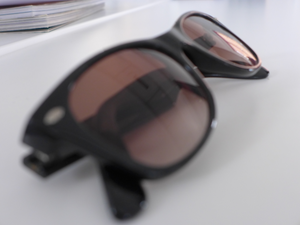Wolfram Image | Things to Try
Wolfram Image | Things to Try
Make edits and run any piece of code by clicking inside the code and pressing .
+
Image Processing, Analysis & Computation. For beginners or experts, Wolfram Image provides a comprehensive and efficient set of image processing, recognition and analysis functions, tightly integrated with highly automated machine learning, statistics, visualization and more.
Import, Process and Export an Image
Import, Process and Export an Image
Import an image file: |
In[]:=
flower=Import["ExampleData/coneflower.jpg"]
Apply an image effect: |
sepiaflower=ImageEffect[flower,"Sepia"]
Export the result in the format of your choice: |
Export["flowerexample.png",sepiaflower]
Enhance and Restore Images
Enhance and Restore Images
Sharpen an image: |
In[]:=
Sharpen
Automatically enhance contrast, brightness and gamma of an image: |
ImageAdjust
Filter an image to remove noise: |
MedianFilter
,1
Color Processing and Image Effects
Color Processing and Image Effects
Create a new version of a product image by changing colors: |
ImageRecolor,0.1,ColorsNear,0.02,_
,ColorsNear
Simulate natural lighting by automatically balancing color: |
ColorBalance
Restyle one image with the graphical style of a second: |
ImageRestyle
,
Align and Stitch Images
Align and Stitch Images
Combine overlapping images into a coherent whole: |
ImageStitch
,
,
Align a collection of misaligned images with different focus: |
aligned=ImageAlign
,
,
,
;
Make the boundaries uniform with padding, and then combine the aligned images into a well-focused image: |
ImageFocusCombine[ImagePad[#,-9]&/@aligned]
Perform Object Detection
Perform Object Detection
Use pre-trained networks to identify objects in an image: |
In[]:=
ImageContents
Highlight detected objects: |
HighlightImage
,ImageBoundingBoxes
Classify Images and Image Features
Classify Images and Image Features
Classify the subject of an image: |
In[]:=
ImageIdentify
,
,
Identify facial features such as emotion: |
FacialFeatures
,
,
,"Emotion"
Run a Neural Network with Images
Run a Neural Network with Images
Import a specific, pre-trained model: |
In[]:=
net=NetModel["ResNet-101 Trained on YFCC100m Geotagged Data"]
Apply the model on images of famous landmarks to identify the geolocation of images: |
In[]:=
locations=net
,
,
Plot the resulting positions: |
GeoGraphics[GeoMarker[locations],GeoRangePadding->Scaled[0.1]]
Perform Segmentation and Segment Analysis
Perform Segmentation and Segment Analysis
Create a binary image showing connected components. In this case, an upper threshold for detection is specified: |
MorphologicalBinarize
,.9
Colorize each component: |
ColorizeMorphologicalComponents
,.9,Method->"Nested"
Import and use a semantic segmentation network from the Wolfram Neural Net Repository: |
cityNet=NetModel["Dilated ResNet-22 Trained on Cityscapes Data"]
Use the imported network to perform semantic segmentation and colorize the results: |
ColorizecityNet
Process 3D Images
Process 3D Images


























